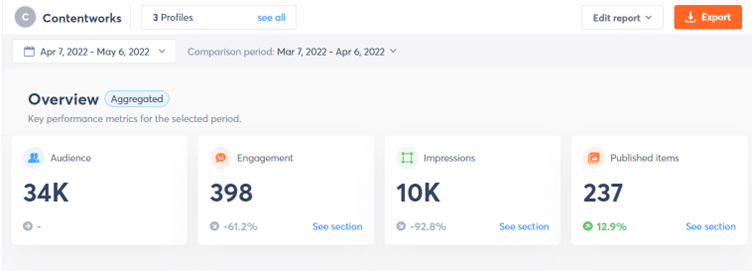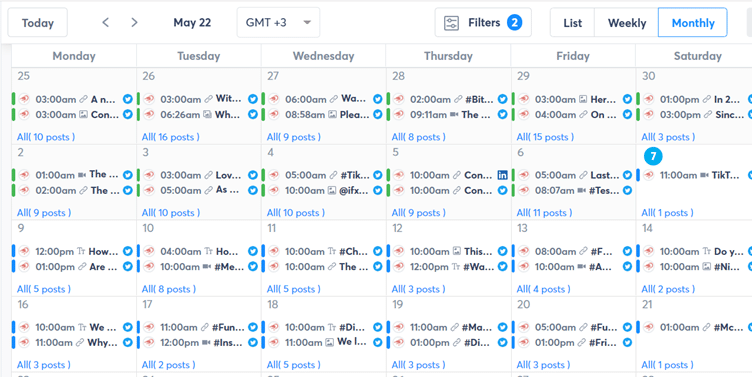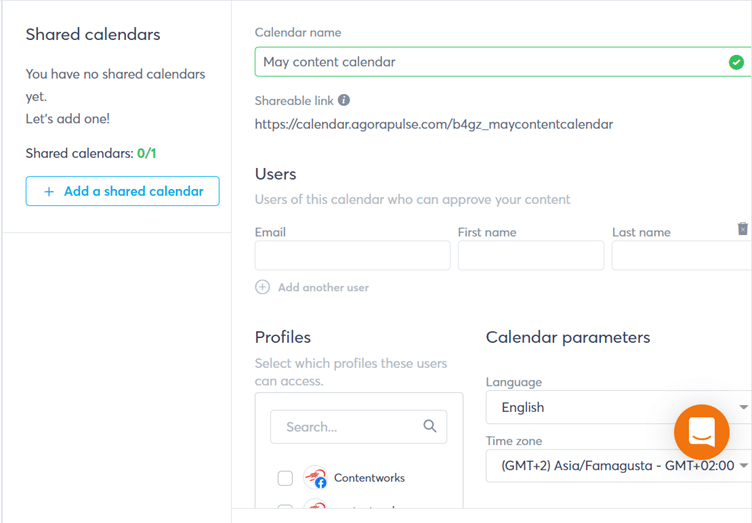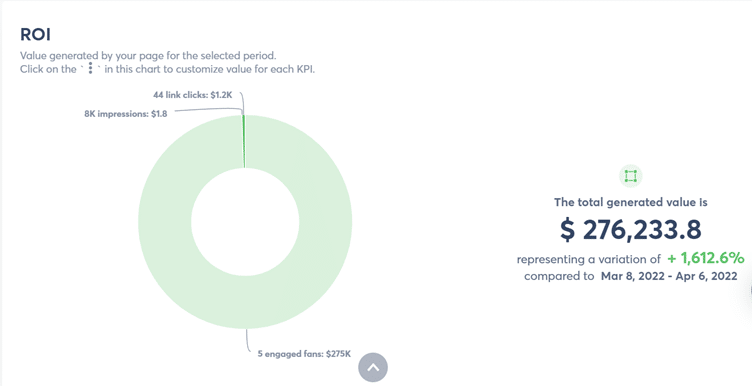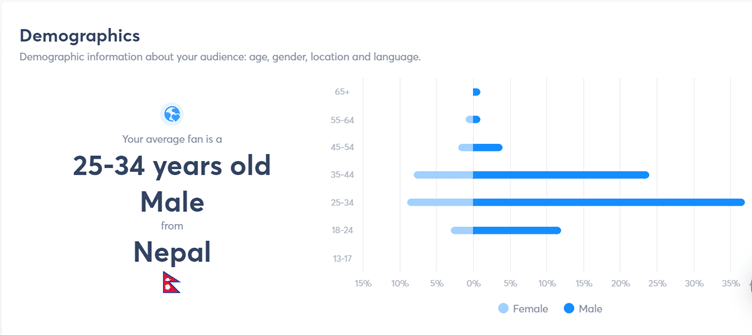You can download hundreds of social media analytics spreadsheet templates. One template for your Facebook page activity, one for strategy, and another for Twitter. Then you can have another one for your content planning. But is that really what you want?
I’m not a fan of using spreadsheets for social media. In this article, I’m going to tell you seven reasons to go beyond a social media analysis spreadsheet if you want to get serious about social media management. More importantly, I’ll also discuss the tools you can use to do it.
The Truth About Spreadsheets
Spreadsheets have been around forever, and they are useful tools for businesses. Most management meetings will feature an excel for costings, projections, and area profits. The capability of spreadsheets is immense, and it avoids the need to whip out a calculator or solve complicated equations manually. But there are downsides to using spreadsheets as well.
Negatives of using spreadsheets for social media management
- Only 48% of people have ever received any formal spreadsheet training. (I’m in the 52% that never did.)
- 27,200 globally head to Google to look for “excel courses” each month.
- On average, people need help twice per week on spreadsheet issues.
- 38% of office workers’ time is spent using spreadsheets.
- 18% spend over 60% of their day working in one.
- 12% of spreadsheets contain serious errors, and at 3% of surveyed firms, people estimated that 50% had errors.
- On average, a spreadsheet problem takes 8 1/2 minutes to fix.
- 98% of workers have seen a spreadsheet error cost their employers’ money.
7 Reasons to Go Beyond a Social Media Analytics Spreadsheet
Spreadsheets definitely play an important role in accounting, budgeting, and regional projections. But are they helpful in the social media analytics space? Do speadsheets display data the way you need them to?
1. Collaborating on spreadsheets is a nightmare
If you’re still working on “offline” spreadsheets and emailing them to colleagues, then you will know collaboration on spreadsheets i fraught with problems. You might receive numerous emails back from your colleagues with different versions. It’s then difficult to identify who has the latest version. I’ve also seen spreadsheet conflicts on servers resulting in team members saving the same sheet as version 1, 2, and 3, and ARGH!
Social media analytics spreadsheet tip: Ditch the spreadsheet and do this instead
- Google Sheets have much the same capabilities as a standard spreadsheet, but they are collaborative and will track changes. That means you can add people and set user permissions. they are free to use, and they can be accessed from any device.
- Jotform Tables is a spreadsheet-database hybrid tool. Information collected through forms automatically populates the associated table.
- Coda is an online program for teams whose best work is scattered across documents, spreadsheets, and apps, Coda is free to start then scales up to a paid version.
2. Human errors and formula issues plague social media analytics spreadsheets
One of the worst things about spreadsheets is the easy errors you can make on them. As previously mentioned, only 48% of people ever received any formal spreadsheet training. The rest of us are self-taught spreadsheet amateurs who google formulas, watch YouTube tutorials, or keep trying until we get it right. Hopefully.
Spreadsheets platforms will accept most of what a user types, allowing for spelling mistakes and incorrect data input. So, the final result is only as good as the data you enter.
In the social media reporting space, all that can lead to huge errors in planning, budgeting, and spend. Plus—and it’s a big plus—spreadsheets don’t show data in real time. That fact is hugely significant to social media managers.
Social media analytics spreadsheet tip: Use a social media management tool
Utilize an intuitive social media program like Agorapulse to calculate your social media analytics for you. Input any date range and any channel, and pull the data you want in seconds. That’s real-time data.
Below you can see the data for a Facebook boosted post we ran at Contentworks Agency. To produce this report in a spreadsheet would have taken a lot of time, data collation, perhaps resulting in incorrect metrics.
3. Nobody reads your social media analytics spreadsheet
It’s likely that a lot of the recipients of your social media analytics spreadsheet didn’t read it. That’s not because they don’t value the work you put in or because they don’t care about the results.
People often don’t read social media analytics spreadsheets because there is so much data that it isn’t clear what they are meant to be looking at. Or there is no way for them to understand what all that social media data even relates to. Or that they only want certain answers and don’t have the time to sift through all those columns to work it out.
If you’re more advanced, you could create diagrams using your data. But spreadsheets require a significant amount of manual effort to compile clean graphs and pie charts. Peek behind the curtain, and you’ll realize it took hours of pasting data, creating formulas, and tweaking formatting to get those representations.
Social media analytics spreadsheet tip: Use a social media reporting tool that does it all for you
Social media reporting shouldn’t be that hard. Plus, you deserve recognition and praise for all the amazing work you’ve been doing. Make your results pop with Power Reports.
Using Power Reports, you can:
- Access multiple profiles at once for a combined social media report.
- Report with data from up to 10 social profiles.
- Provide a combined overview for all channels. This is presented in a colorful and easily digestible format.
- Choose the data that matters to your stakeholders and hide the rest.
- Showcase key stats and insights.
- Send everything in one beautifully designed PDF.
As a busy stakeholder, wouldn’t you rather see the following social media report than a spreadsheet?
4. You have to plan content twice, thrice, etc.
Here’s one that drives content and social media managers crazy: Having to produce their content in advance using a spreadsheet.
First, many writers hate using spreadsheets and will write their content in word, copy it into the spreadsheet then copy it again into the actual platforms. That’s a huge waste of time. Plus, edits and changes flying around can get confusing and eat into your planning time.
Social media analytics spreadsheet tip: Use an online content calendar
What if you could write the content and put it straight into your platforms without a spreadsheet? Once you’ve worked on an online content calendar, you won’t go back.
First, you can see a complete overview of all your content and how it looks on each platform before it goes live. (That’s something a spreadsheet can’t do.)
And second, you can create a shared calendar and email it to stakeholders or decision makers for sign-off.
Stakeholders and decision-makers can see all your work (if you let them), but they won’t be able to make unsolicited edits. Your content will be displayed with emojis, GIFs, images, and thumbnails making it much more appealing that flat content in a spreadsheet.
5. Proving social media ROI is difficult to do in a spreadsheet
How do you work out the ROI (return on investment) on your social media efforts using a spreadsheet?!
Imagine you have four social media channels and you post every day on each of them. You’re boosting each post, and you’re also running paid ads. What social media metrics would you need to add to a spreadsheet to generate your ROI on each of these and in total?
The whole process via spreadsheet sounds exhausting and ineffective.
Today, brands are investing more than ever before in social media. They spend a lot of their budget on content, designs, videos, and social media management. So, it’s essential that you can accurately state what they got back in return. In fact, 58% of marketers say they need to prove social media ROI before getting approval for future spending, and yet only 37% are “very confident” in doing so.
Additionally, marketers who compute their ROI are 1.6 times more likely to be awarded higher budgets for their marketing activities.
Social media analytics spreadsheet tip: Use a social media ROI tool
If tracking social media ROI is a priority, Agorapulse offers a streamlined solution. Its built-in ROI tracker automatically calculates the return from your activity.
Agorapulse automatically compares your ROI to the previous period (or any other time frame you set) so you can see whether this metric is trending upward or downward.
You can also try tools like:
- Cyfe–This tool monitors ROI and other important metrics from virtually any channel. It collects data from your website, social media or PPC.
- Google Analytics–This is a free tool that gathers analytics and can monitor ROI. It will do this by tracking links and activity on your website and measuring them against the goals you set. A goal might be a purchase. (Analytics does require some setup)
- Meta Pixel and Conversions API–The Facebook (Meta) pixel is triggered when a user completes an action. If you install the pixel on your Facebook page, then you can analyze the effectiveness of your conversion funnel and calculate your return on ad investment.
6. Benchmarking competitors is tedious
At some point, your client or stakeholder is going to ask you to benchmark your brand’s social media analytics against core competitors, for example on Twitter. So how do you do that in a spreadsheet?
It’s possible. I do remember doing it for years (circa 2015) but here’s the issue: You will need to go into their Twitter account, pull data from all their tweets (engagement, fans, responses) and then collate this into a spreadsheet. Then you would need to do the same for your own Twitter account. After that, add some spreadsheet formula magic (and plenty of cussing) to produce a comparison. Your spreadsheet won’t update in real time, so you need to repeat the exercise each month.
Social media analytics spreadsheet tip: Use Twitter Report Card
Connect your Twitter account to Agorapulse and you can get a Report Card. Your Twitter Report Card will populate free Twitter analytics and allow you to compare yourself to major competitors by adding their handles.
You will see how your last 30 days of activity compare in terms of your Twitter audience metrics, Twitter publishing metrics, and Twitter conversation metrics. Here’s what that looks like, and it took just 2 minutes to produce.
Still want to deliver the results in a spreadsheet like you calculated it yourself? Copy the data over and the job is done, we won’t tell!
Try Benchmarking your Twitter account now!
7. A social media analytics spreadsheet doesn’t pull data in real time
Spreadsheets stop updating when you stop updating. That means that if you want to know how your channels are performing right now or how they are doing against competitors, you will need to analyze them all over again. If you’re running paid campaigns, you will need to keep a close eye on your metrics to be able to pause or edit something that isn’t working.
A social media analytics spreadsheet is only showing you past data, not live. Spreadsheets are also not able to easily interpret the data you input because they are not connected to your platforms. For example, what countries your fans are from, when they’re most active, what hashtags they use, do they count as positive ambassadors?
Social media analytics spreadsheet tip: Connect to an online social media management dashboard
A dedicated social media platform is always connected to your social media channels. That means you can instantly access real-time social media analytics and data. You can also dig below the surface to source insights into your demographic. Agorapulse Power reporting can provide you with a wealth of real-time information on your metrics and audience. That means you can create the kind of content your audience wants to see in the future.
In Conclusion
Social media analytics are an essential part of social media management, but they don’t need to take hours to produce. Working with interactive and real-time software allows you to collaborate, share, report, and adjust your social media marketing campaigns. All without the hassle and time-wasting of a spreadsheet.
Ditch the social media analytics spreadsheet! Find out how Agorapulse can help you do social media analysis online! Check out our free trial of Agorapulse to help you schedule, track, and measure all your social media efforts.






